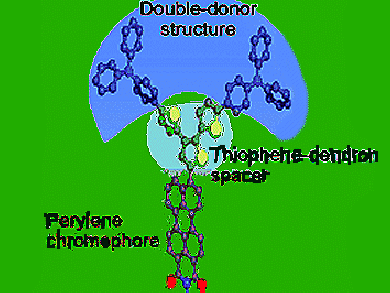Dye-sensitized solar cells (DSCs) are a class of low-cost solar cells which belong to the group of thin film solar cells. Solid-state DSCs show great potential owing to their increased stability compared to liquid DSCs. The liquid electrolyte often bears the problem of leakage and electrode corrosion. However, compared to the parent liquid DSCs, solid-state DSCs have shown much lower efficiencies.
Dr. Chen Li and Professor Klaus Müllen, Max-Planck Institute for Polymer Research, Mainz, Germany, and colleagues reported the synthesis, optical, electronic, and photovoltaic properties of a perylene-monoimide sensitizer with a terthiophene dendron spacer and a triphenylamine donor that shows an outstanding efficiency of 3.8 % in a solid state DSC under 1.5 AM light illumination. To date, this is the highest reported efficiency for perylenemonoimide sensitizers as well as for similar sensitizer systems using a cyanoacrylate acceptor.
Key factors for this excellent photovoltaic performance are (i) careful balance of the orbital energies and color tuning, in order to achieve a broad spectrum with high absorptivity, (ii) considerate steric architecture, and (iii) a sound degree of orbital partitioning.
- Double Donor-Thiophene Dendron-Perylene Monoimide: Efficient Light-Harvesting Metal-Free Chromophore for Solid-State Dye-Sensitized Solar Cells,
H. Wonneberger, N. Pschirer, I. Bruder, J. Schçneboom, C.-Q. Ma, P. Erk, C. Li, P. Bäuerle, K. Müllen,
Chem. Asian J. 2011.
DOI: 10.1002/asia.201000895




